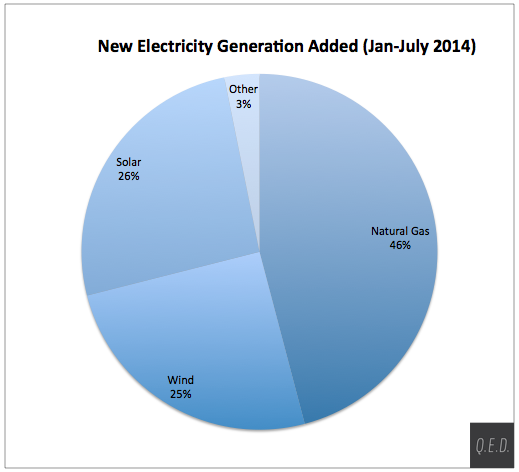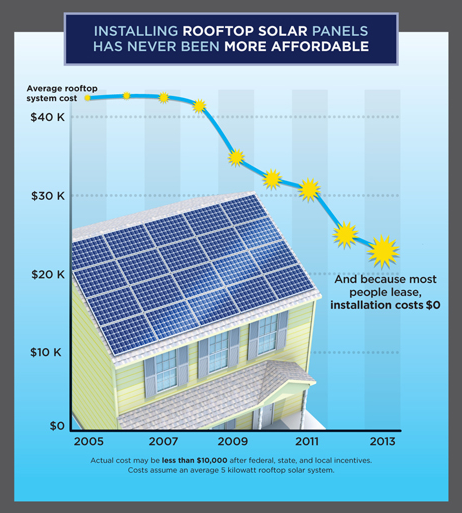Advanced energy is on the march. A new report from the Federal Energy Regulatory Commission (FERC) shows that, of all the new electric generating capacity installed in the U.S. since January, more than 97 percent was advanced energy: 46 percent natural gas, 26 percent solar, and 25 percent wind. The remaining 3 percent of new capacity shown as “other” in the accompanying chart includes 87 megawatts of biomass, 32 MW of geothermal steam, and 19 MW of hydro. That means, in fact, that 99.7 percent of the 4,758 MW of new generating capacity added in the first seven months of the year was advanced energy – 11 MW of oil-fired generation and 1 MW of truly “other” accounted for the remainder. In July, all the new capacity that month came from wind (379 MW) and solar (21 MW). The FERC numbers count only utility-scale installations, and do not include solar installed on residential and commercial rooftops.

With rapidly falling prices, advanced energy is everywhere. Several international mining operations are installing solar and wind generation to cut energy costs.
A report out this week from the Union of Concerned Scientists (UCS) predicts that rooftop solar will reach price parity with power from the grid in 25 or more states. Sandy Dechert, writing for Cleantechnica, points out that the price competitiveness as calculated by UCS doesn’t rely on state and local incentives, but does take into account the federal investment tax credit and uses incentives from a sample state.

As the cost of rooftop solar falls, a new challenge arises. Bloomberg reported this week that the solar industry could be facing a global panel shortage – the first since 2006. Back then, solar accounted for only 1.5 gigawatts of capacity worldwide. This year alone, the industry is expected to install 52 GW. As the industry continues to grow by leaps and bounds, panel manufacturers are increasing production capacity to keep up. “At some point, it will be a 400-gigawatt-a-year market; it’s just mathematical,” said SolarCity CEO Lyndon Rive.
The U.S. wind industry is also faring well, ranking second in the world in installed capacity, according to a new Department of Energy report. Total installed U.S. wind capacity stands at 61 GW, with utility-scale turbines generating electricity in more than 39 states and territories. Again, that is only expected to grow. This week the U.S. Bureau of Ocean Energy Management selected a company to buy its third lease for offshore wind development, this parcel off the coast of Maryland. US Wind will pay $8.7 million for 80,000 acres about 10 nautical miles off the coast.
For further proof of the growth of advanced energy, just look to Inc. Magazine’s annual list of 5,000 fast-growing companies, which names four AEE member companies. Congratulations, Next Step Living, Opower, CLEAResult, and BRIDGE Energy Group!
